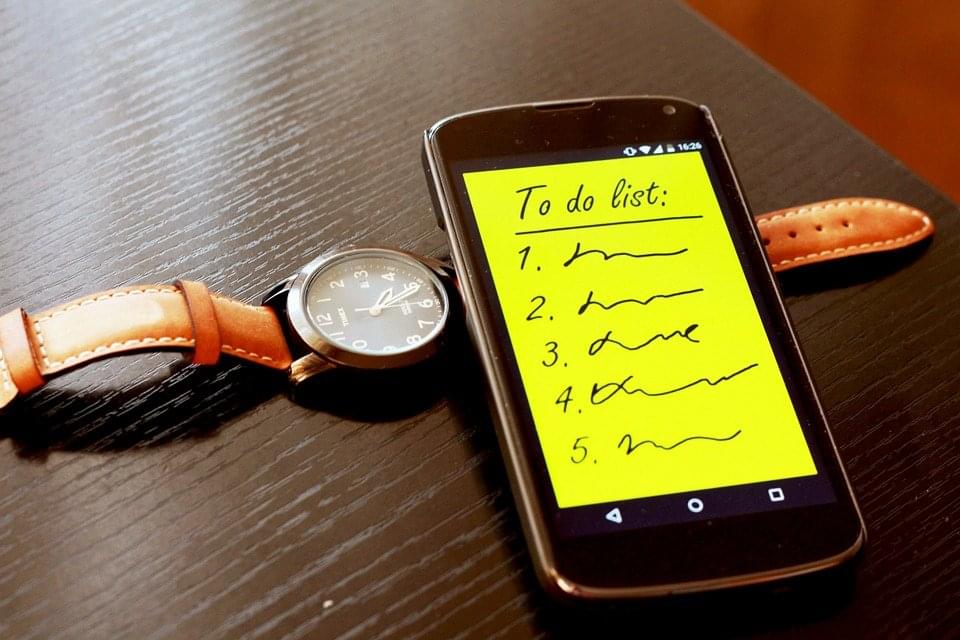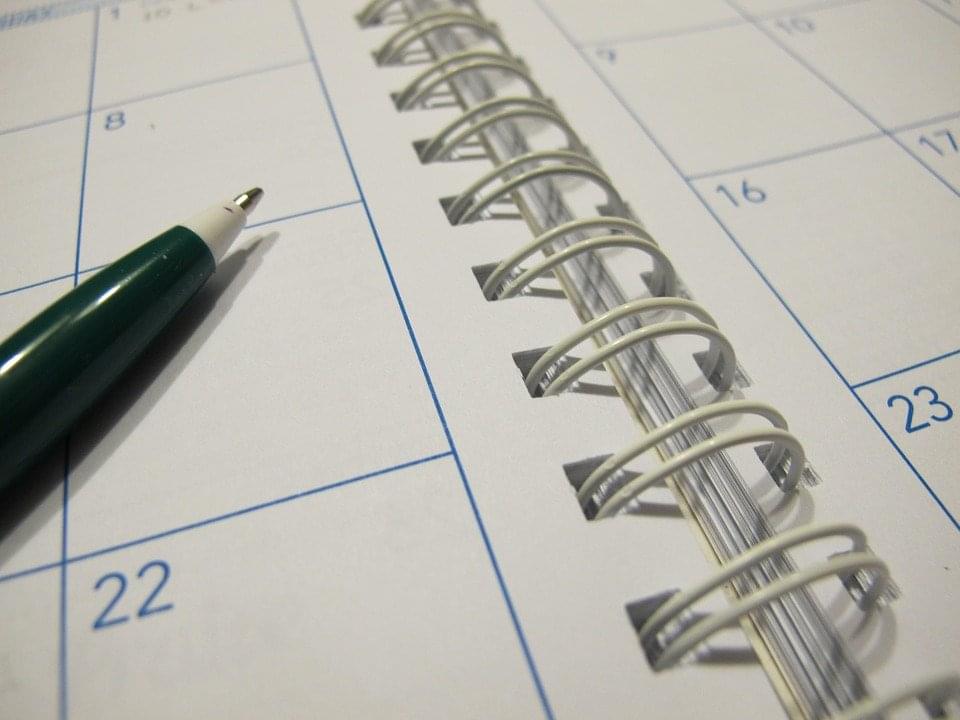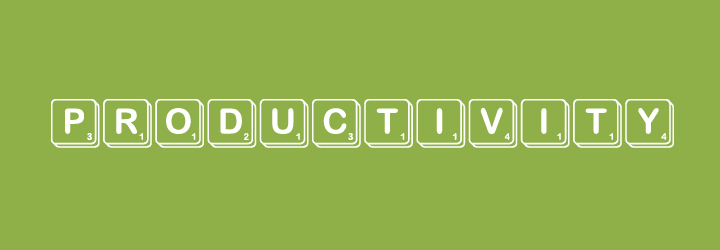8 Ways to Take Control of Your Productivity - NOW!
Within recruitment, effective time management is absolutely integral. You will often be dealing with various projects, working on different types of roles, with different agencies/clients, and have to seamlessly transition between these tasks, AND stick to multiple deadlines. It’s exhausting, right? So it’s no surprise that this job involves long hours, and a good deal of stress.
But it doesn’t have to be that way, and learning to take control of your productivity is actually quite easy (if you know how). Lizzi Hart of the Graduate Recruitment Bureau explains all…
1. Prioritise properly
 When you really think about it, the most important task you have for the day is both the most time-pressing/important one, and also the one you’re dreading. That’s why you should NOT put it off, and do it as soon as you can. As a recruiter, this would probably be business development, or candidate resourcing. Both tasks can be demoralising if you get nowhere, or exhilarating if you manage to do well. But the chances are, you’ll remember the bad days more often, and this is probably why you’re avoiding it in the first place.
When you really think about it, the most important task you have for the day is both the most time-pressing/important one, and also the one you’re dreading. That’s why you should NOT put it off, and do it as soon as you can. As a recruiter, this would probably be business development, or candidate resourcing. Both tasks can be demoralising if you get nowhere, or exhilarating if you manage to do well. But the chances are, you’ll remember the bad days more often, and this is probably why you’re avoiding it in the first place.
Rather than filling your morning with small tasks that ‘won’t take long’, you should tackle the important task first. After you complete the large project, everything else will seem easy, and you will feel far more relaxed (and probably get more tasks done afterwards). Plus, if you decide to stack up all those small tasks in order to avoid the harder task, you’ll probably spend even more time than the difficult task would take (and you definitely won’t feel as accomplished).
2. Break up your day with short bursts of admin
You are a human, not a machine. So while you might have started that lengthy and difficult task first, it doesn’t mean you can’t rest until it’s done – especially if it will take you longer than an hour. ‘Ploughing through’ might work occasionally, but you need to take regular breaks from a task in order to stay productive throughout the duration. For example, if you are tackling a task that will be interrupted by lunch, spend 10 minutes either side of your lunch doing some admin, in order to cool down, and ease yourself back into the more challenging work. However, this does NOT mean that every time an email or notification pops up, you should read it. Instead, plan your breaks (points 3 & 7 will help with this), and remember to go back to that tricky task once you’ve had a brief mental rest.
3. Give the Pomodoro method a try
 The Pomodoro method involves working solidly for 25 minutes, followed by a 5 minute break (go for a walk, make a coffee, meditate etc.). Every 4 Pomodoros, you can take a 20-30 minute break. You can then use this unit of time (a Pomodoro) to both measure and estimate how long a task takes you. During this time, you should not tolerate any distractions; your phone should be on silent/off, you should ignore emails and social media until later. Using this method, you will be able to break up your day into manageable chunks, and become more productive in turn. You’ll probably find you spend less time doing the same tasks using this method, than through your usual approach.
The Pomodoro method involves working solidly for 25 minutes, followed by a 5 minute break (go for a walk, make a coffee, meditate etc.). Every 4 Pomodoros, you can take a 20-30 minute break. You can then use this unit of time (a Pomodoro) to both measure and estimate how long a task takes you. During this time, you should not tolerate any distractions; your phone should be on silent/off, you should ignore emails and social media until later. Using this method, you will be able to break up your day into manageable chunks, and become more productive in turn. You’ll probably find you spend less time doing the same tasks using this method, than through your usual approach.
4. Set goals, give yourself rewards
You could aim for 7-8 Pomodoros per day, and reward yourself with something nice at the end of the day. Or, you could have a small snack each time you complete a Pomodoro, or every time you complete a task. You know what motivates you, so spend some time working out what you’d like to work towards (for me, it’s coffee) and aim to be realistic with your goals. There is no point setting difficult goals, because you probably won’t complete them, and will end up feeling lousy about your abilities (when it was just a badly set goal!).
5. Plan your work to fit around your week
 Do you finish early on a Friday? If so, make sure all your time-sensitive work is out the way by Thursday evening, leaving you all of Friday for anything that needs your immediate attention, or projects you’ve not had the time to look at. Make sure you know exactly what your week looks like by using a diary, or your phone, and actually fill it in! Your mind will feel a lot clearer with your plans documented elsewhere.
Do you finish early on a Friday? If so, make sure all your time-sensitive work is out the way by Thursday evening, leaving you all of Friday for anything that needs your immediate attention, or projects you’ve not had the time to look at. Make sure you know exactly what your week looks like by using a diary, or your phone, and actually fill it in! Your mind will feel a lot clearer with your plans documented elsewhere.
6. Refresh your brain by leaving your desk every now and again
Just like the Pomodoro method encourages, make sure you are not working solidly for 4 hours straight. Get up and go to the toilet, fill up your water, make a tea. Do anything to get your eyes away from your computer for a few moments, every now and again (or every 25 minutes if you’re trying point 3). Your brain and eyes need to be refreshed, just like your palette between courses, and your body between days; work is no different.
7. Leave creative tasks to when you’re at your most productive
 For instance, writing job specifications can be gruelling, as you need to engage with your creative side. You should therefore assign these tasks to when you work best. For many, this is first thing in the morning (but after a coffee), or a little bit after lunch – but you know your body the best. Save menial tasks that you could do in your sleep, for when you’re at your sleepiest, i.e. the post-lunch slump, as soon as you arrive in the office, or at the very end of the day. Understanding when and what to do at each point of the day is very important for improving your productivity.
For instance, writing job specifications can be gruelling, as you need to engage with your creative side. You should therefore assign these tasks to when you work best. For many, this is first thing in the morning (but after a coffee), or a little bit after lunch – but you know your body the best. Save menial tasks that you could do in your sleep, for when you’re at your sleepiest, i.e. the post-lunch slump, as soon as you arrive in the office, or at the very end of the day. Understanding when and what to do at each point of the day is very important for improving your productivity.
8. Sit up straight when undertaking a challenging task
According to Bloomberg, the mild discomfort borne from sitting up straight will drive you to focus more, especially good for tackling a difficult task. But not too much discomfort, and not for too long at a time, as these will work counter-intuitively. To understand this ‘trade-off’, think about how little work you do, and how unproductive and sleepy you feel when you’re comfy on the sofa, or sitting in bed. So when you slump or slouch in your office chair, you’ll feel less productive, less focused, and achieve less.

